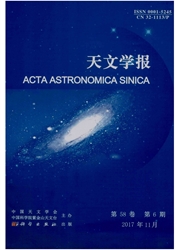

 中文摘要:
中文摘要:
目前,越来越多的低轨卫星上都搭载了用于精密定轨的星载GPS接收机,星载GPS已成为低轨卫星精密定轨的主要手段之一.星载GPS精密定轨精度依赖于GPS星历及钟差精度.基于SHORDE—Ⅲ非差动力学定轨功能,以2005年8月1日至8月7日一周的GRACE卫星实测数据为例,采用事后精密轨道(igs)、快速轨道(igr)和超快速轨道(igu)三种GPS星历在同等条件下定轨,估计GPS星历精度对低轨卫星定轨精度的影响,实际计算结果表明igs和igr两类GPS星历定轨精度相当,约为9.5cm,igu星历定轨精度略低于igs和igr星历,约为10.5cm:高频GPS卫星钟差数据对定轨精度会产生1-6cm影响.
 英文摘要:
英文摘要:
Today more and more Low Earth orbiting satellites (LEOs) of new scientific missions are equipped with a GPS receiver for precise orbit determination (POD), on-board GPS has become one of the main POD approaches. However, the on-board GPS POD accuracy obviously relies on the accuracy of GPS orbit and clock products. Based on the zero-difference dynamic POD approach of SHORDE-III program, this paper shows the influence of GPS orbit and clock on the POD accuracy of LEO using real GRACE data and three types of IGS orbit products between 1 Aug. and 7 Aug. The results indicate that IGS final precise orbit product (igs) and rapid orbit product (igr) have the equal POD accuracy which is about 9.5cm, the POD accuracy using ultra-rapid orbit product (igu) is about 10.5cm which is a little worse than igs and igr; High-rate GPS clock products have an impact of about 1-6 cm on the POD accuracy of LEO.
 同期刊论文项目
同期刊论文项目
 同项目期刊论文
同项目期刊论文
 期刊信息
期刊信息
